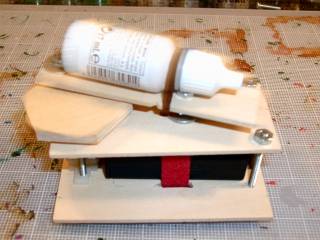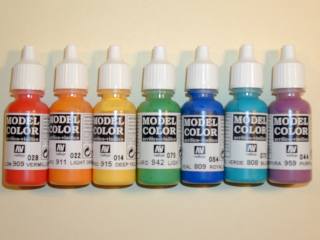

|
|
|
I thought to myself, wouldn't it be great to have a small machine do the mixing. As a test, I rubber-banded a bottle to the blade of a reciprocating scroll saw. Success! The heavy-duty, high-torque motor mixed the bottle thoroughly in about 10 seconds. However, since I normally paint indoors, and I don't want to have a big power tool lying on the desk, I thought I would create my own hobby paint mixer for small bottles of paint.
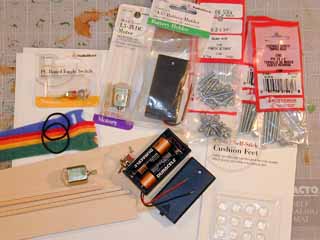
|
|
|
As shown in the picture, I selected a 3V DC motor, the cheap kind usually found in slot cars. This motor rotates at 8700 RPM under no load and provides 5.3 g/cm of torque. Some co-workers suggested a gasoline-powered weed trimmer motor, but that would be troublesome to run inside the house. I also selected a double AA battery pack to provide the 3V, a switch to turn it on and off, and an assortment of machine screws and other doodads. For stock I would use 3/32" (1.0 mm) thick bass wood that I have lying around from other projects.
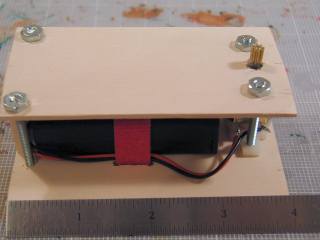
|
|
|
Unfortunately, the tension of the metal screws cracked the wooden platform,
so improvement number one would be to provide standoffs - small pipes to space
the platform pieces and take the stress off them platforms.
A slot is cut in the upper platform to provide the linear track for the one
end of the top-most plank.
As you see, this top-most plank, or bottle sled, has one end that move
rotationally with the wheel and one end that moves linearly with the linear channel.
The washers are slightly oversized since that's all I had in the
parts bin.
They are oiled to lessen friction.
Unfortunately, this version of a hobby paint mixer is unusable.
Primarilly, the motor is not strong enough to power the paint bottle in orbit.
While the package claimed 8500 RPM under no load, in practice the engine
acheived about 60 to 100 RPM.
This is slower than you can acheive mixing a bottle by hand.
Additionally several of the bass wood planks and corners by the screws
are splitting.
I don't think the machine is reliable for long term use.
Finally, the motor likes to walk itself across the desktop.
Perhaps a heavier or wider platform is in order.
Although this version of the paint mixer is destined for the
scrap heap, all is not lost.
This prototype provided invaluable insight for future
generations of paint mixers.
In fact, as soon as I was done with the project,
I was already envisioning the next version.
Thanks for reading thus far, but be sure to read on about the
new and improved
Mark II Hobby Paint Mixer.
Next, atop the gear I mounted a small wooden hexagon to act as a rotating wheel.
The hole in the center of the hexagon is drilled carefully to provide a tight
friction fit over the metal gear.
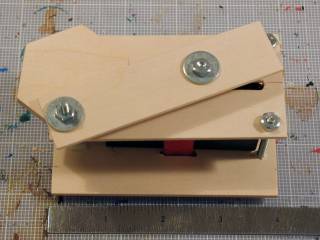
The final step is to strap a paint bottle to the sled and let 'er rip.
This photo shows the bottle in motion.
If you click on the image, you can view a short (227 kB) MPEG movie of the mixer
in action.
Ensure your movie player loops continuously to get an idea of the speed
of the motor.
